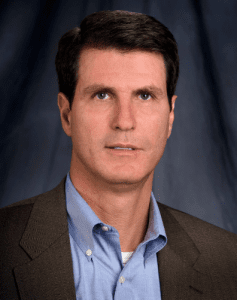
The Hidden Complexities of Breast Cancer Care: From the Lab to the Patient’s Side
October 11, 2024
BioBuzz’s Expert Contributor Hive is a network of expert innovators within the life sciences who publish thoughtful and thought-invoking articles, stories and commentary. Designed to bring together leading professionals, thought leaders, and specialists to share their expertise, insights, and advice, our Expert Contributors have the opportunity to shape conversations, inspire innovation, and support the professional growth of our community and the industry at large.

By Marian Rodriguez, PhD, PMP
Marian Rodriguez is a senior business leader with a biomedical sciences background (PhD), passionate about driving patient-centered diagnostic and therapeutic innovations globally. International (Americas & Asia) and multi-sectorial experience spanning academic, private, and government sectors. Collaborative partner who dynamically engages stakeholders, multidisciplinary colleagues, and healthcare providers to support the life cycle of life-saving health products thereby contributing to over 50 diagnostic and 12 therapeutic products. Skilled in organizing, planning, executing, and leading (with business and PMP certifications), thus enabling efficient transitions from R&D to regulatory clearance, commercialization, and sales and customer training. Committed to advancing patients’ health extends beyond the workplace, contributing to community initiatives through volunteering and mentorship.
EXPERTISE
To many, October conjures images of the orange-red hues of fall leaves, but for a cancer geek like myself, it brings a wave of pink. This pink symbolizes resilience, awareness, and the tireless work of scientists, advocates, and patients in the fight against breast cancer.
My grandmother’s and great aunt’s passing after battling against breast cancer ignited a deep resolve in me to make a meaningful impact on cancer patients by leveraging my love for science to advance the cancer care continuum from advancing research to making medical knowledge accessible to people like my grandma who struggled to understand clinical jargon. Working globally in academic research, the biomedical industry, and government sectors has opened my eyes to the complexities of bringing diagnostic and therapeutic innovations to patients. Here are three lessons I’ve learned along the way.
The Multisector Puzzle of Cancer Innovation
Broadly speaking, researchers explore the intricacies of cancer cells — why they go “rogue” in the first place, how they bypass immune protection, and how we detect and eliminate them. With a deeper understanding of cancer’s complexities, researchers develop (or refine) diagnostics and therapies. This process is long and expensive, and unfortunately, most of these innovations don’t survive the long journey; approximately 5-10% of oncology drugs and <15% of medical devices in the U.S. reach approval. It is a delicate balance between accelerating innovations and careful evaluation to ensure patients’ safety.
Even after approval, commercialization also takes considerable time and effort — from launching the product locally to expanding globally (an additional 3 – 5 year process), ensuring reimbursement, and maintaining supply and access. Once in the market, these innovations undergo rigorous post-market surveillance to ensure continued safety and efficacy. Needless to say, the complexities are many, but what could we do about them?

Beyond the Oncologist, the Full Team Behind Every Patient
During my time as a doctoral student shadowing Tumor Boards — multidisciplinary meetings where various specialists such as oncologists, radiologists, pathologists, and surgeons meet to discuss disease diagnosis and treatment plan — I witnessed in awe the complexity of diagnosing and creating a treatment plan because neither the disease nor the patient profile perfectly fits the theory.
Despite the need for coordinated healthcare, proposed treatment plans are sometimes fragmented or even contradictory. Ideally, specialists collaborate to define the best care plan for a cancer patient. Yet, experts interpret the diagnostic results through their lens and recommend different treatment plans based on their expertise.

To complicate matters, health insurance providers — assuming the patient is fortunate to have coverage in the first place — influence the diagnostic algorithms and treatment based on coverage. For example, even if an Interventional Oncology treatment could offer comparable clinical outcomes to systemic chemotherapy and with a superior quality of life score, an insurance provider might not cover it. The competing priorities between cost and outcomes can lead to undertreatment, overtreatment, or delayed treatment.
Additionally, social determinants of health (SDOH) such as high healthcare out-of-pocket cost, historical redlining practices that lead to healthcare deserts, or inability to take time off from work can prevent patients from adhering to their treatment plans. Moreover, a doctor’s bedside manner, or the ability to communicate in accessible language, can significantly impact patient understanding of their condition and treatment options.
This topic goes deeper and wider than described — there’s a whole field of healthcare economics and healthcare strategy — and I do not mean to undermine the many other challenges surrounding this topic. Here are a few actionable steps in support of comprehensive cancer care.

Supporting a Cancer Patient Beyond Wearing Pink
There’s a full ecosystem of players in the cancer care continuum, beginning with the family and friends, to the healthcare team, to nonprofit organizations and groups that provide resources and support, to the companies that make the diagnostic and therapeutics, to the policymakers and insurance providers who shape the healthcare system. The Capital Region, North Carolina’s Research Triangle, and Philadelphia are living examples of how these ecosystems can amplify advancements in cancer care. It takes both giant and small efforts to ensure patients receive comprehensive treatment and support; below are a few additional examples of how we all can contribute.

As we continue to recognize October as Breast Cancer Awareness Month, let us remember that it takes an entire ecosystem — from researchers and doctors to families, policymakers, and non-profits — each pivotal to improving patient outcomes and finding cures. Let’s continue working together to alleviate the complexities and meaningfully support cancer patients throughout their journey.







